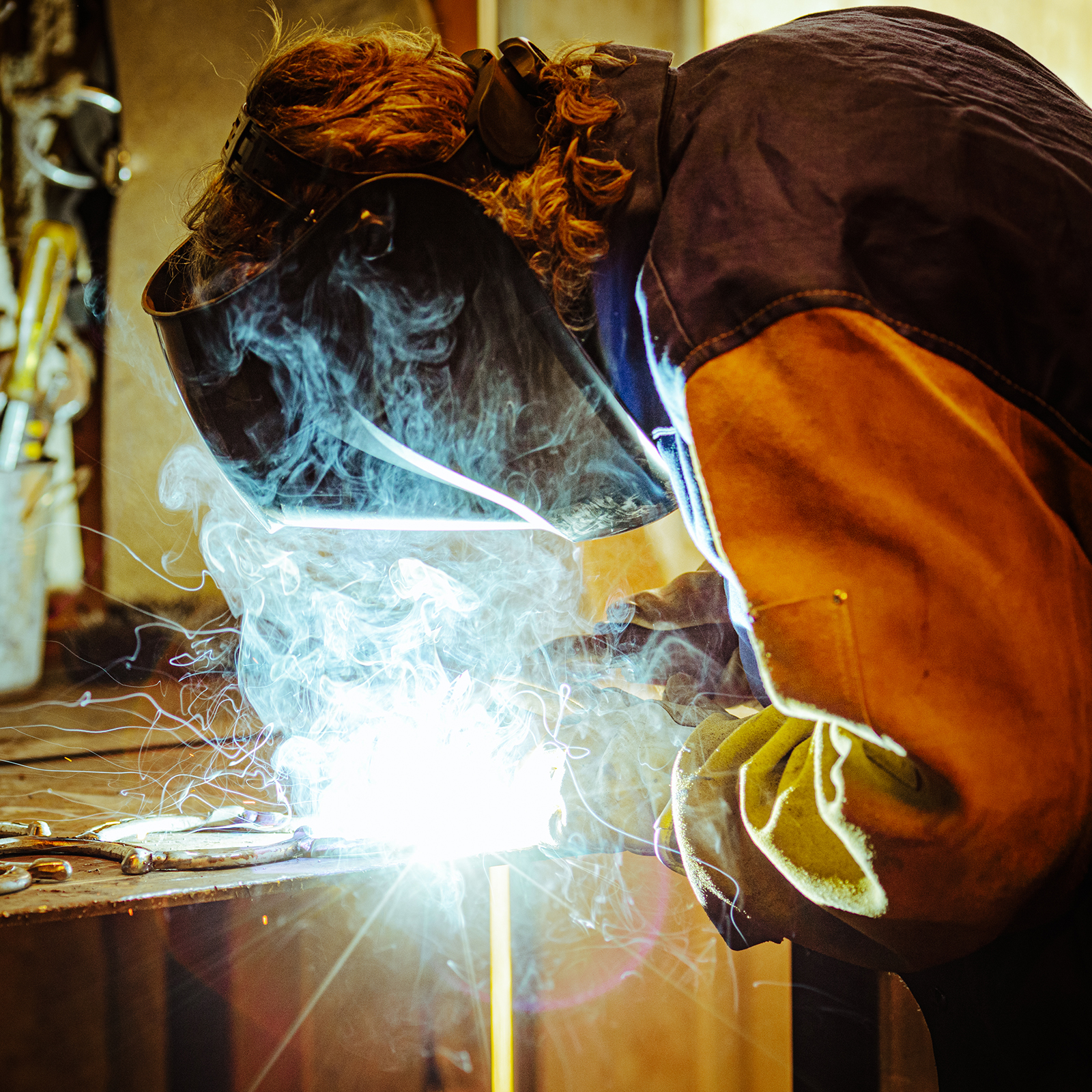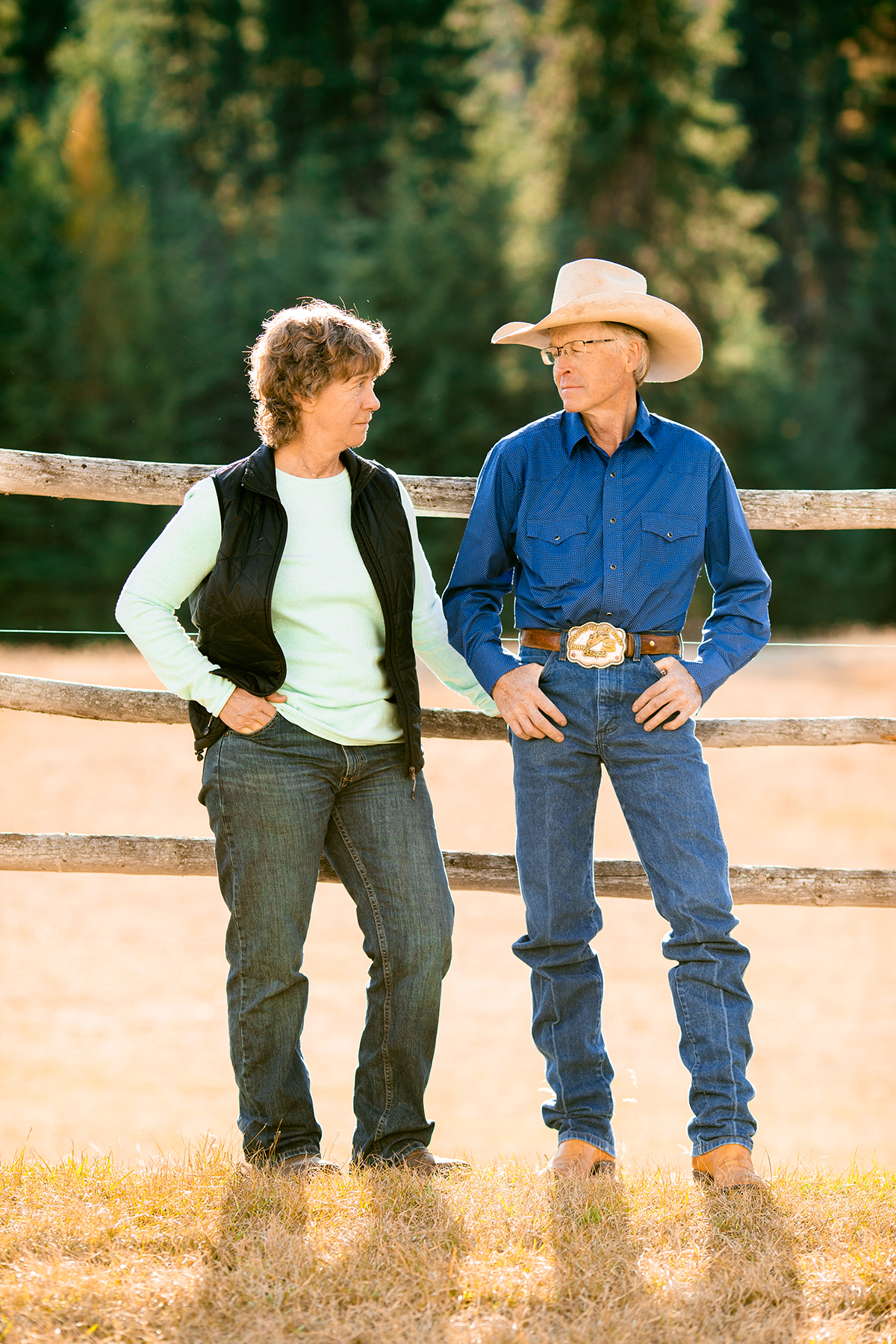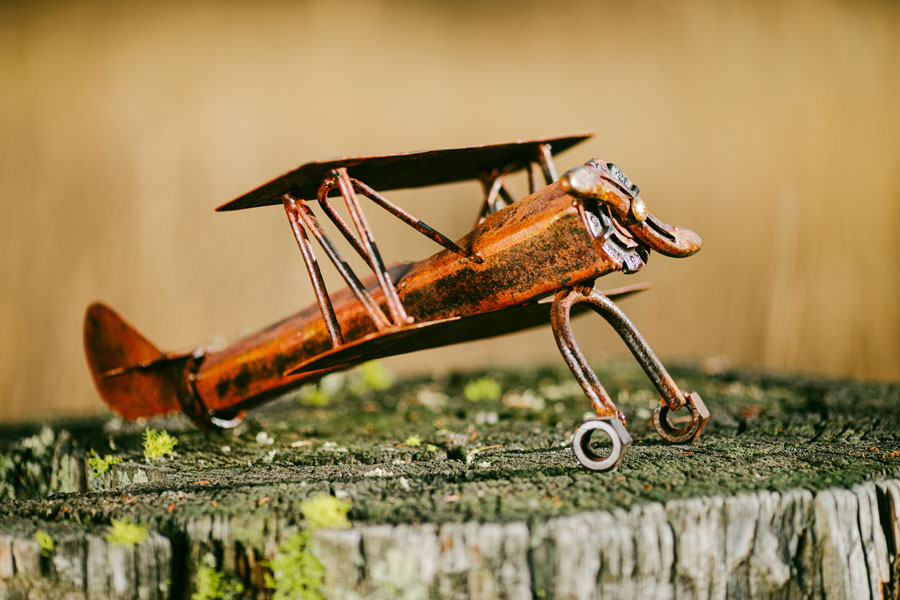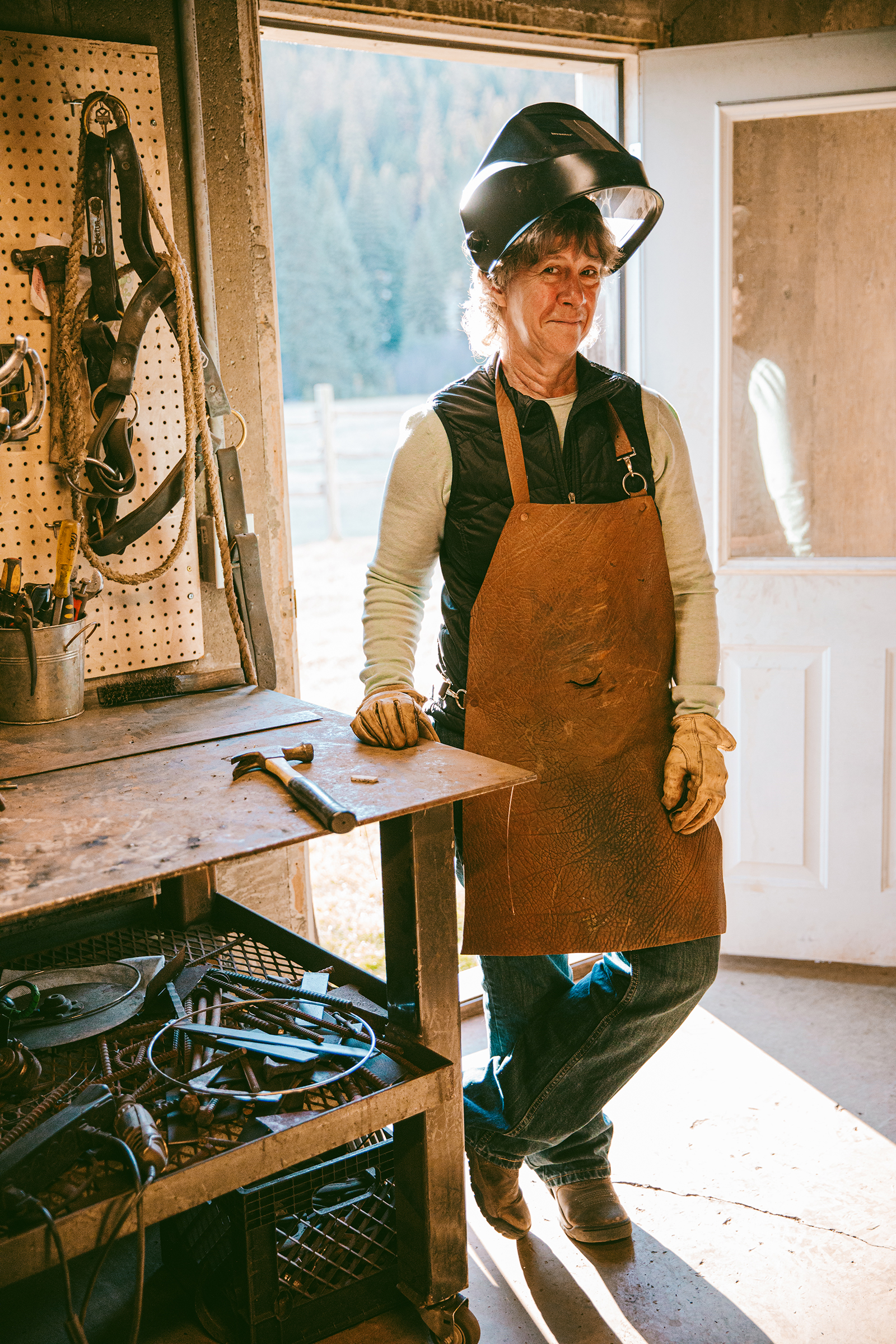
To Gail Workman, everything she lays her eyes on could be art.
“A washer isn’t just a washer anymore,” Gail said. “It can be a cowboy hat or an eyeball.”
Gail, a 2020 Montana Cowboy Hall of Fame inductee, started welding about five years ago as a hobby. She never intended it to become more than that, but now she sells her art under the name Wilderness Worn.
Gail and her husband, William “Bill” Arthur Workman, are both packers for the Spotted Bear Ranger District and have spent the better part of 40 summers riding into the Bob Marshall Wilderness hauling supplies.
At the end of each packing season, the Workmans are left with a mountain of horse and mule shoes from the summer. Once Gail got the idea that she could take the shoes and turn them into art, every shoe that comes off an animal is a way for her to share the story of the wilderness.
“If I have two pieces, one normal, and one that’s wilderness worn, people want the story every time,” Gail said.

Gail grew up in Columbia Falls, just south of the Blue Moon Nite Club. Along with her brother, Gail was active in 4-H and rodeo club, to the point where her father built a rodeo arena in the back yard that turned into a big weekly rodeo.
“That’s when Bill started hanging out a little bit,” Gail said with a smile.
After graduating from Flathead Valley Community College, Gail was offered a basketball scholarship to the University of Montana Western but turned it down, opting to marry Bill instead and join him in the packing lifestyle.
In 1982, Gail started working for Spotted Bear where Bill was, and still is, the head packer. She started as a volunteer packer before getting hired full-time in 1987, and hasn’t missed a season yet, even through an education degree at Montana State University Billings and a 24-year career as a schoolteacher.
Bill, also a 2020 Montana Cowboy Hall of Fame inductee, is the longest-serving packer for Spotted Bear, and has been working continuously as a packer for more than 50 years with only a short hiatus during college.
“I always thought Bill deserved it,” Gail said. “I never thought about me being in [the hall of fame], but the history of his family packing is pretty cool.”
The Workman homestead on Pinkham Creek, 15 miles west of Eureka, was established by Bill’s great grandfather Will Workman in 1903. The wilderness homestead originally consisted of 160 acres, and grandfather Charlie, father Harry and Bill all grew up there.
Charlie began packing for the U.S. Forest Service at age 20, and Harry started packing for the National Park Service after high school.
Bill experienced his first pack trip at age 7, riding along with his father in the Spotted Bear Ranger District. After working for outfitters and the National Park Service on the east side of Glacier Park, Bill was hired by Spotted Bear in 1980.
“It was my first government job I had, and I ended up running around the same area I did with my father,” Bill said.
The Workmans’ legacy of packing stretches back 107 years, and since Gail and Bill’s daughter Chelsea was raised partially in the wilderness, the legacy has passed through four generations.

Until the COVID-19 pandemic hit in early 2020, Gail displayed her work at a shop in Eureka. Then she purchased a small trailer and parked it in front of their house on the Workman homestead to serve as a showroom.
The trailer is small, maybe 80 square feet, but every inch of wall space, and much of the floor, is filled with welded sculptures. Crosses, wreaths and moose heads hang on the walls, large angels and tall flowers stretch up from the floor, and on an old barn-wood shelf are groups of cowboys sitting around a fire with washers for hats.
“At Christmas I’ll make trees and reindeer, at Easter I have bunnies, Thanksgiving I have turkeys. I made Batmans for a gift — that was fun,” Gail said, looking around the showroom. “I don’t know what my favorite thing to make is.”
Gail does custom projects upon request, and says a lot of them involve people who want a sculpture made out of their own horse’s shoes.
“It’s more personal that way: That’s their story and it’s all about the story,” Gail said.
The one thing Gail never uses in her creations are new shoes, with a single exception when her brother gave her a small box of pony shoes that she turned into wind chimes.
Using worn shoes requires a lot of work before the welding begins. Gail starts by pulling the nails out of the shoes, straightening them and cleaning off the mud. Then it’s a process of removing rust from points where she plans on welding because wire-feed welding doesn’t work well with a rusty surface.
However, because Gail doesn’t want the contrast of shiny welds on rusty shoes, she uses a peroxide wash to re-rust the work when it’s done. The process is time intensive, especially given the volume of her output, but she says she can complete simple projects like a cross in half an hour from nail pulling to re-rusting.
“I just bought her the welder so we could do some little projects, but I never knew I was creating a monster,” Bill said. “It’s kind of neat of her to think about doing something with all them shoes we pull off.”
In the basement of the Workman house, Gail’s shop is filled with buckets upon buckets of horseshoes. The room looks unorganized to an outsider, but everything is exactly where Gail needs it.
“I will run out of wilderness-worn shoes over the winter,” Gail said.

It seems like a farfetched statement. The buckets line an entire side of the shop, separated into two distinct groups to keep the wilderness-worn shoes apart from the others.
During the packing season, the Workmans shoe their 80 head of mules and horses several times a year, and Gail ends up with more than 3,000 shoes that have traversed the Bob Marshall Wilderness.
“For a lot of my bigger pieces, I don’t use many of my wilderness-worn shoes because I run out so fast,” Gail said, noting that a half-finished angel sculpture on her worktable takes 22-26 shoes. “But if people want it, for the story, I’ll do it.”
Gail says the encouragement she’s received from Bill, her family, friends and neighbors is “unbelievable.”
“One day I showed up here and my brother had made me a welding table,” she said. “That’s pretty good support.”
In addition to welding, Gail also does woodwork, and driftwood from the shores of Hungry Horse Reservoir features prominently in some of her work. But metalwork remains her favorite medium, and it pushes far beyond horseshoes and washers.
“What is this?” Gail asked, holding up some scrap metal. “It’s a dog! Just need to put some ears on it.”
In Gail’s mind, hooks turn into birds and old buggy seats form the body of a fish with sickle-section scales. The oddest bit of inspiration she’s found in scrap metal?
“A giraffe. I’ve made two or three of them,” Gail said. “There’s a piece of a fence stretcher that looks exactly like a giraffe head.”
Gail has a list of projects she’d like to accomplish, including sculptures for each rodeo event, Santa and his pack mules that might go on a roof, and a life-sized horse or mule.
“I never thought she had an artistic bone in her body, then all of a sudden she can see stuff where we might have to sit there and think about it for a long time,” Bill said. “She’s really good at this. The only thing is you can’t leave any tools lying around, because they might get welded into something.”
Gail has no plans to be a full-time artist, because her life working as a packer is too important. The one season she brought her welding equipment to Spotted Bear diminished the enjoyment she got from both pursuits. But she sees her trail work as a similar calling.
“Ultimately, I just like the art of packing,” Gail said. “I love wrapping packs, I love loading mules, and you never get tired of taking pictures because it’s just so cool.”
“And if you ever get complacent, somebody will come up to you and say, ‘Wow, this area is so cool,’” she added. “We get so used to the wilderness that you forget not many people get to see it.”